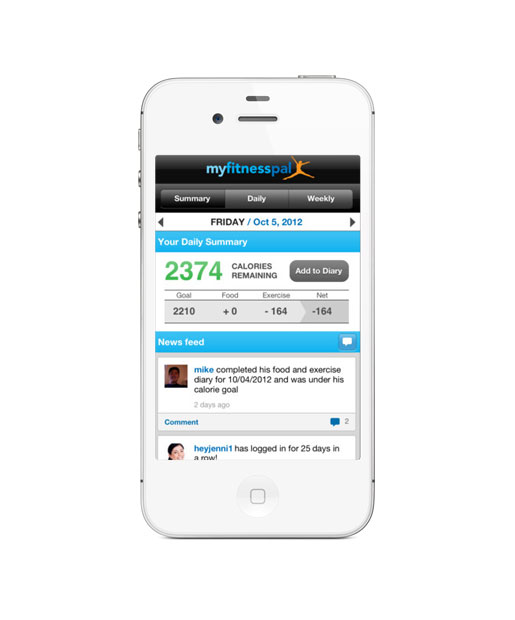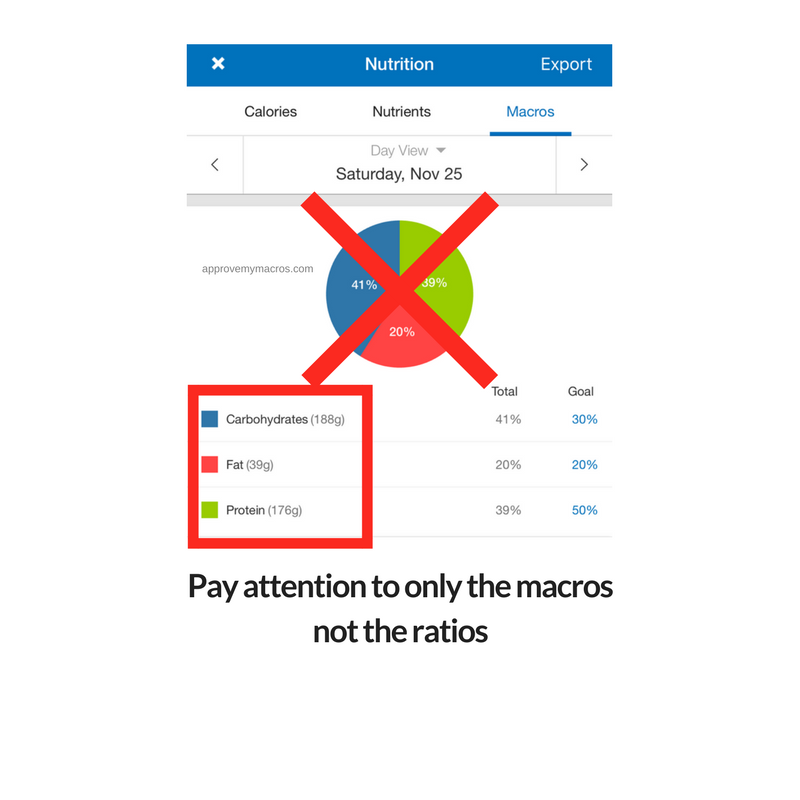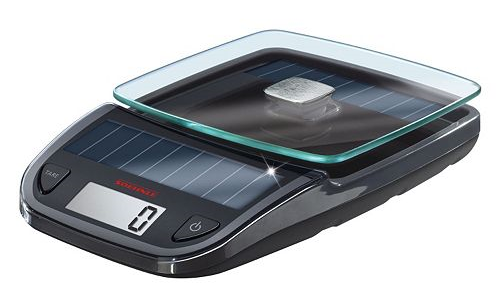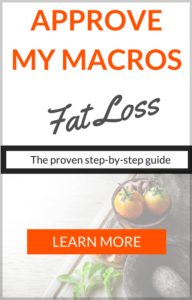The macro calculator is one of the easiest tools to use for anybody wanting to find out how many calories they need on a daily basis to lose weight, maintain, or to gain muscle.
It calculates your optimal macronutrient ratios based on your age, height, weight, gender, and activity level.
Before you read this make sure you have a good understanding of What Is Flexible Dieting?
AGE
GENDER
WEIGHT
HEIGHT
ACTIVITY LEVEL
Goals
2894 CALORIES PER DAY
Carbohydrate
Protein
Fat
323g 44.6%
220g 30.4%
80g 25.0%
 Need Help? Join 1500+ happy customers using our Approve My Macros programs
Need Help? Join 1500+ happy customers using our Approve My Macros programs
MEALS PER DAY
ADJUST PROTEIN
ACTIVITY LEVEL
|
1 |
HERE IS A BREAKDOWN OF THE EXERCISE LEVELS FROM THE MACRO CALCULATOR:
Sedentary: Spend most of the day sitting (e.g. bank teller, desk job)
Light Activity: Spend a good part of the day on your feet (e.g. teacher, salesman)
Moderately Active: Spend a good part of the day doing some physical activity (e.g. waitress, mailman)
Very Active: Spend most of the day doing heavy physical activity (e.g. bike messenger, carpenter)
Higher activity level has a direct correlation to having a higher daily calorie goal.
For example; if you can maintain your weight at 2,200 calories per day, then adding vigorous daily exercise to this means you need more calories to maintain your weight.
The same rule applies even if your goal is to lose weight.
If you are sedentary and your goal is to lose weight, your calorie goal might be (for example) 1,500 calories per day.
If you decide to start exercising, the calculator will increase your daily calorie goal to about 1,700 calories per day.
This is because more energy is required to fuel your workouts, and your metabolism is increased therefore calories should be higher.
HOW THE MACRO CALCULATOR RATIOS ARE CALCULATED
THE FOLLOWING FORMULA IS USED:
- Protein ratio is set at .825 grams per pound of bodyweight.
- Fats are set at 25% of daily energy expenditure.
- Carbohydrate grams come from the remainder.
Daily energy expenditure is calculated from your age, gender, height, weight, and exercise output.
ADJUSTING PROTEIN
If you lift weights more than three times a week then set to the High level.
Setting protein Low adjusts the ration to .65 grams per pound
of bodyweight.
High will set to 1 gram / lb. Higher protein levels may be beneficial.
MEALS PER DAY
Click on the meal numbers on the macro calculator to split meals into “per meal” basis.
The results show the number of grams of macronutrient should be eaten each day.
This varies based on your individual stats, but you can get a more specific amount of calorie burn by subtracting your sedentary calorie amount from the chosen exercise amount.

GOALS
By default, the macro calculator results are for maintaining weight. Select either lose or gain if you are trying to lose fat or gain muscle.
If you’re trying to build muscle and burn fat try choosing lose 10% on the macro calculator.
If you are sedentary and your goal is to lose weight, your calorie goal might be (for example) 1,500 calories per day.
If you decide to start exercising, the calculator will increase your daily calorie goal to about 1,700 calories per day.
This is because more energy is required to fuel your workouts, and your metabolism is increased therefore calories should be higher.
This varies based on your individual stats, but you can get a more specific amount of calorie burn by subtracting your sedentary calorie amount from the chosen exercise amount.
Adjusting Macros For Your Body Type

Somatotype – a category to which people are assigned according to the extent to which their bodily physique conforms to a basic type (usually endomorph, mesomorph, and ectomorph).
Everybody is different so calculating your macros is just the beginning. Each persons lifestyle, health, and metabolism all play a crucial role in how much energy we actually burn and how many macros we should eat.
That being said you may have to adjust your macros even further for your specific body type.
Ectomorph – Hard Gainers
An ectomorph is best described as slender. Characteristically, they have delicate bone structure, small shoulders and chest, and a fast metabolism. Ectomorphs are the classic “hard gainers.” They find it hard to gain weight and put on mass.
On the plus side, it’s easy for them to get lean. They tend to require a greater percentage of carbohydrates to prevent muscle catabolism as well as a higher calorie intake overall.
Mesomorph – Easy Gainers
A mesomorph is someone who trends toward being muscular. They’re often strong, athletic hard-body types with well-defined muscles, broad shoulders, and dense bone structure. Mesomorphs generally have little trouble gaining muscle or losing fat, though they will put on fat more readily than ectomorphs.
They can handle a moderate level of carbs due to their ample capacity to store muscle glycogen. Weight gain will happen, however, if carbs and calories are overly high. No body type is immune to a bad diet!
Endomorph – You Look At Food And Gain Weight
The Endomorph is best described as soft. They typically have a round or pear-shaped body, shorter limbs, a stocky build, and a slower metabolism.
Endomorphs can put on a lot of muscle, but they also tend to carry more adipose tissue and thus have a greater propensity to store fat. Because excess carbohydrates in the endomorph’s diet end up as fat, a high carbohydrate intake will make it difficult for them to get lean or lose weight.
NOW THAT WE KNOW OUR DAILY INTAKE OF CALORIES AND WHAT OUR MACROS ARE FROM THE MACRO CALCULATOR, THE NEXT STEPS WOULD BE TO LEARN HOW TO TRACK YOUR MACROS.
So How Do I Track My Macros?
Study after study has confirmed the benefits of keeping track of the food you eat and the activity you do. I personally use Myfitnesspal, there are a plethora of apps and websites you can visit to track your food. I have found Myfitnesspal to have one of the larger databases and I just like the ease of use of it.

Sign up and start tracking EVERYTHING you eat! They even have a scanner where you can scan the packaged foods you eat from time to time.
PAY ATTENTION TO THE MACROS
All you have to do is use the numbers from the calculator and match the numbers up in Myfitnesspal with the foods you eat. Try to keep this at a plus or minus five with carbs and protein and plus or minus two with fats.

WEIGH ALL FOODS
A lot of nutritional information is available on food packaging, however, a scale will ensure you accurately track what you eat.

APPROVED Tip: Make sure all food is cooked before weighing for better accuracy!
Using Flexible Dieting as my main approach when it comes to a weight loss or weight gain has given my clients and I the ability to eat what we want and how we want and still see great results! This is not a diet but yet a lifestyle.
My goal as your coach is not just to teach you how to lose weight quick, any personal trainer can do that, my goal is to help you develop the necessary skills and to teach you the fundamentals of weight loss so that six months to a year from now the weight is still off.
You’ll Love Our Programs
Step-by-step ebooks, or fully customized personal coaching. Let us help you succeed!
Scientific Reference
- Mifflin, M. D., St Jeor, S. T., Hill, L. A., Scott, B. J., Daugherty, S. A., & Koh, Y. O. (1990). A new predictive equation for resting energy expenditure in healthy individuals. The American Journal of Clinical Nutrition, 51 (2), 241-247.










Leave A Comment